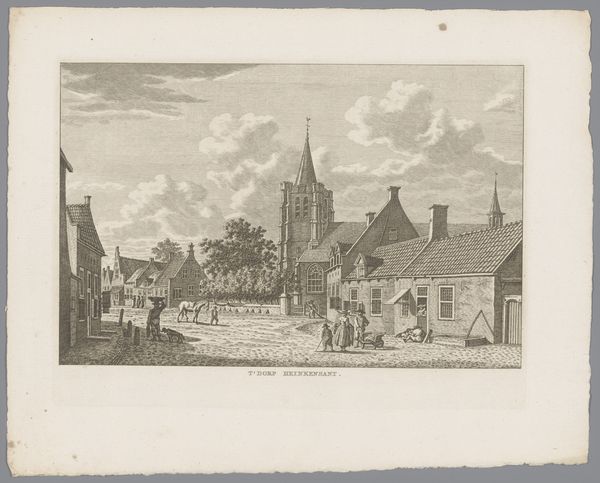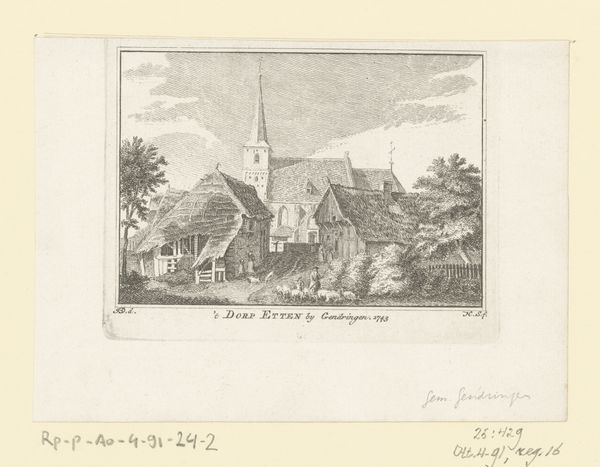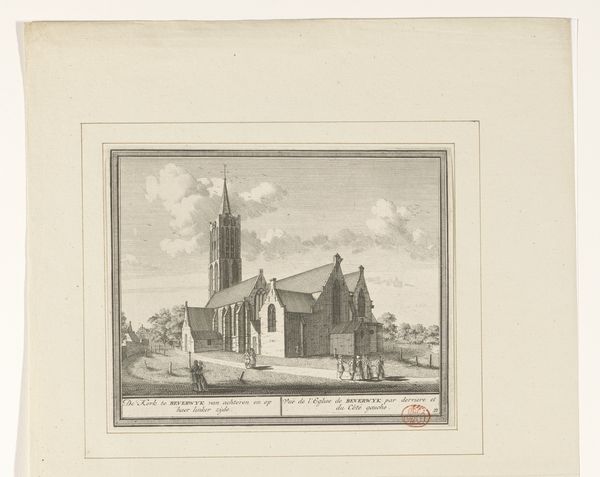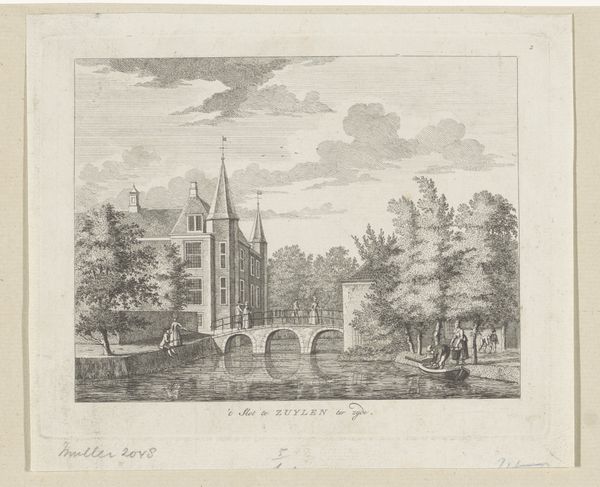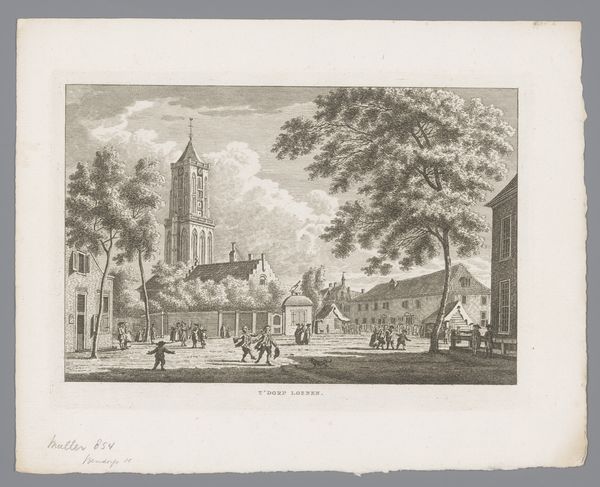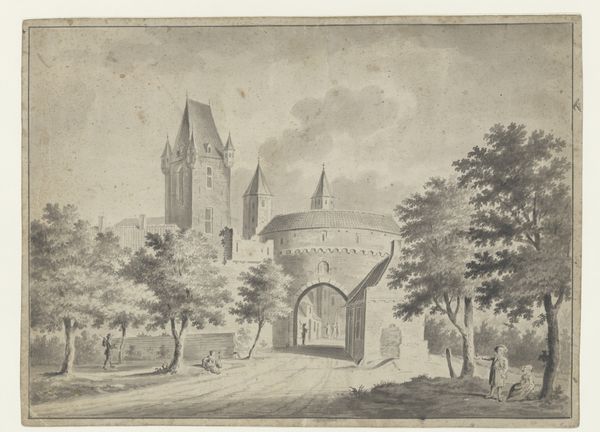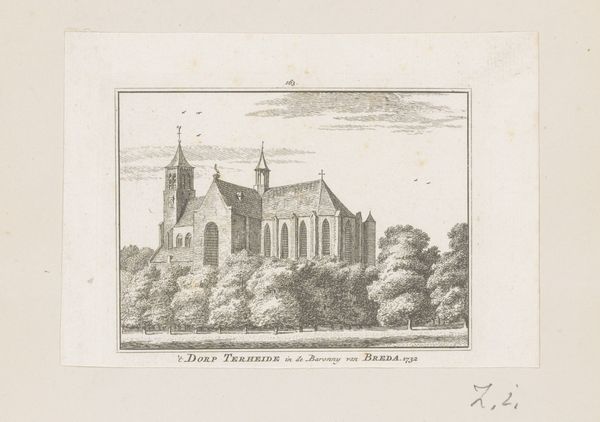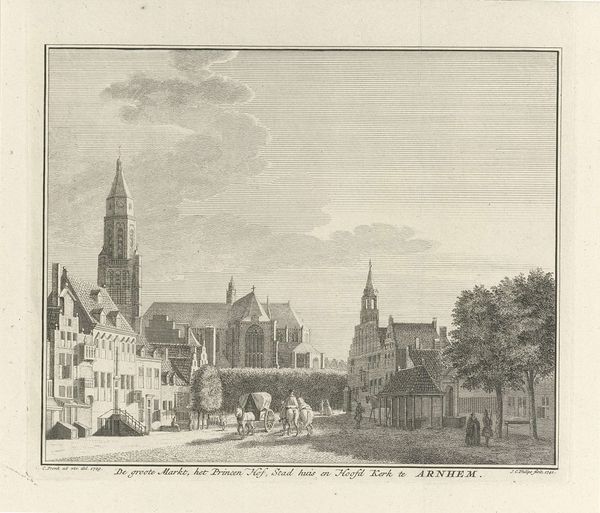
print, engraving
#
baroque
# print
#
landscape
#
cityscape
#
engraving
#
watercolor
Dimensions: height 190 mm, width 205 mm
Copyright: Rijks Museum: Open Domain
Curator: Here we have a cityscape titled "Gezicht op de Onze Lieve Vrouwekerk en toren in Amersfoort," or "View of the Church of Our Lady and Tower in Amersfoort." It's an engraving, dating back to around 1760, crafted by Paulus van Liender. Editor: It strikes me as quite serene. The delicate lines of the engraving lend a quiet formality, a gentle orderliness to the depiction of Amersfoort. It's as though the artist aimed to capture the town in a moment of composed reflection. Curator: Cityscapes in this era often served purposes beyond mere representation. Consider the symbolic weight of the church, dominating the composition. Towers, particularly church towers, acted as beacons, visually anchoring communities and projecting power and stability. The linear perspective pulls the viewer towards it. Editor: Absolutely, and it's not just about religious authority. These images are often imbued with civic pride, visual affirmations of the prosperity and stability of a city. Notice the solitary figure in the rowboat; their presence anchors the architecture with a sign of human activity and the rhythms of daily life. Curator: Precisely. Also, consider the careful attention to detail. Van Liender rendered the architecture with a precision that highlights the aspirations of the era, echoing baroque sensibilities through formal articulation. It invites viewers to contemplate not only the literal buildings, but also the collective ambition they symbolize. It emphasizes the human hand. Editor: Yet, it's also essential to recognize that this controlled, idealized image exists in dialogue with the complex social and political realities of the time. Cityscapes are often carefully curated to omit anything deemed undesirable, like poverty or social unrest. Curator: Very true. The engraving becomes a powerful tool, shaping how viewers perceived—and ideally, remembered—the urban landscape. So what's left are only things that have social license to be seen or accepted. Editor: Yes. A calculated statement of a particular perspective, where what isn't shown speaks as loudly as what is. It also acts as a precursor to modern marketing, selling an idealized version of communal life to the wealthy urban elite. Curator: These visual texts are a great entry point into interrogating our collective memory. Thank you for helping me to uncover the hidden symbols. Editor: Thank you. That gives one quite a bit to reflect on in a deceptively simple city view.
Comments
No comments
Be the first to comment and join the conversation on the ultimate creative platform.

